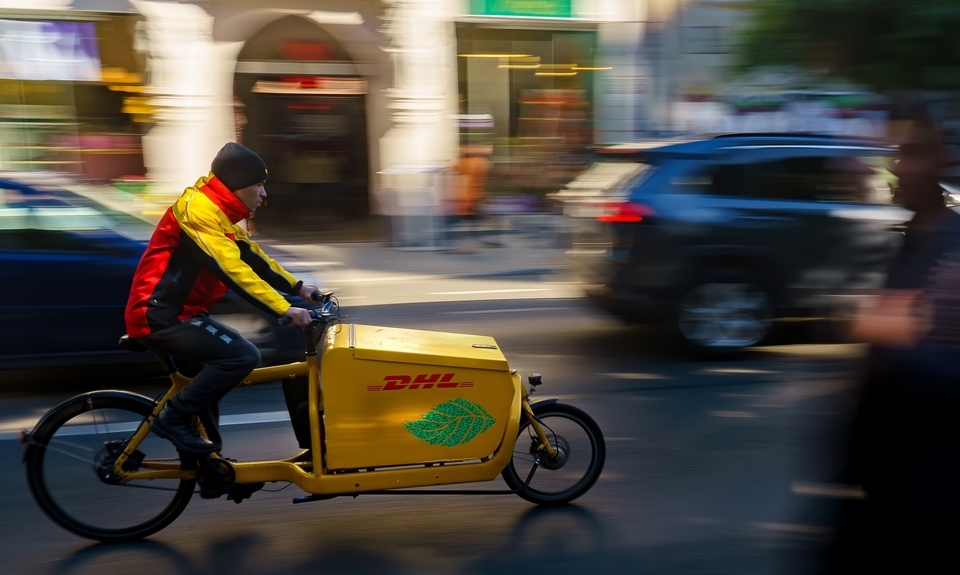With one click, you can have a parcel delivered to your home. However, the journey it takes to reach your doorstep is far from simple, let alone the environmental impact it has. What if we could reduce carbon emissions and improve efficiency with a revised delivery system?
Imagine living in a big city where delivery trucks constantly drive around, dropping off packages from online orders. While this makes shopping convenient, it also leads to more traffic, pollution, and higher delivery costs. Does this have to be our reality?
To address this issue, a new way to coordinate delivery services to be more eco-friendly is proposed. This approach involves using two tiers, or “echelons”, of delivery to balance the need for quick, cost-effective service with the goal of reducing carbon emissions.
Let’s break down how this system works.
Coordination challenges
The traditional delivery system involves large trucks picking up packages from warehouses outside the city and delivering them directly to customers. This method increases traffic congestion and pollution, especially in busy city centres.
To address this, cities are moving towards a two-tier delivery system.
In the first tier:
- called the First-Mile (FM)
- trucks transport packages from warehouses to smaller hubs on the outskirts of the city.
In the second tier:
- known as the Last-Mile (LM)
- smaller, greener vehicles like electric bikes or low-emission vans pick up the packages from these hubs and deliver them to customers.

This system aims to reduce the number of large trucks in city centres and lower overall emissions. However, coordinating these two levels efficiently is challenging, as it involves multiple delivery service providers (DSPs) with different priorities.
A game for change
Our solution proposes a new model using a game theory approach called bilevel optimisation to better coordinate these two echelons of delivery. The Single-Leader Multi-Follower Game. Here’s how it works:
Think of a game where a green logistic service platform (the leader) makes a move, and the other players (the followers) respond based on that move.
In this context, the leader is a central authority (like a city’s logistics manager) who, through this green logistic service platform, assigns packages to different hubs and smaller delivery providers.
The followers are the various logistic service providers (FM) who have parcels to deliver to customers in the cities and the last mile delivery service providers (LM).
To each their goal
The green logistic platform’s goal is to minimise total carbon emissions from both the logistic service providers (FM) and the last mile delivery stages (LM), while ensuring efficient package delivery.
The FM providers aim to reduce their transportation costs when moving packages from warehouses to hubs.
The LM providers focus on minimising costs and ensuring timely deliveries from hubs to customers, while following the leader’s assignments.
2 methods
To ensure efficiency, two methods are proposed:
Exact Cutting-Plane Algorithm:
- This method precisely finds the best strategy for the leader by considering all possible responses from the followers.
Data-Driven Heuristic Approach:
- Since the exact method can be complex and time-consuming, a quicker, data-driven approach is used.
- This method approximates the best responses from the followers using predictive models, making it suitable for large-scale city operations.
These models were tested using realistic data from cities like Madrid and Berlin. The findings showed that this coordinated delivery model could significantly reduce emissions while also respecting the preferences of the different DSPs, such as on-time deliveries.
The data-driven method was especially effective, providing efficient solutions in a competitive timeframe.
Traditional vs coordinated method
To see how this works in practice, let’s take a look at the following simulation. It was carried-out for a single day of deliveries and covers a scenario in which two last mile operators perform deliveries of 50 packages.
The two images below visualise the distribution of packages. In blue, those delivered by one last mile operator (LM1) and in red those delivered by the other last mile operator (LM2). Image 1 shows the distribution of packages in the traditional scenario and Image 2 shows the coordinated version using the exact method of our model.


It is striking that coordinating the assignment of packages to the last mile operators leads to more condensed assignments, resulting in less travel for both.
Numerically, coordination cuts the total distance travelled by 11.89%, resulting in a 10.65% reduction in total emissions (see table below).

Read also: Greening Vehicle Fleets: Moving from Early to Mass Adoption
What the future holds
In a time where environmental concerns are at the forefront, yet productivity is crucial to keep up with rising demands, this approach not only helps the environment. It also ensures that all delivery providers can operate efficiently and meet customer demands.
Looking ahead, this model represents a significant milestone to reshaping the parcel delivery systems in our cities; therefore, moving towards smart cities. While implementing these changes will be demanding, coordinating FM and LM delivery providers through a central authority has shown to reduce carbon emissions, making it a considerable step towards sustainable urban logistics.
This article presents the key points of an academic paper written in the framework of the URBANE project. Republication with slight adjustments was authorised. Original article here. Full paper available here.



Funded by the European Union. Views and opinions expressed are however those of the author(s) only and do not necessarily reflect those of the European Union or the granting authority. Neither the European Union nor the granting authority can be held responsible for them. Any communication or dissemination activity related to the action must use factually accurate information.






